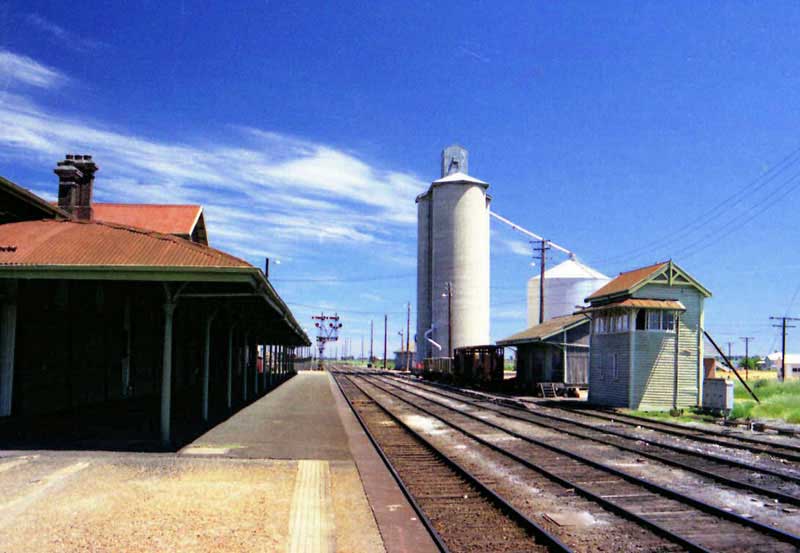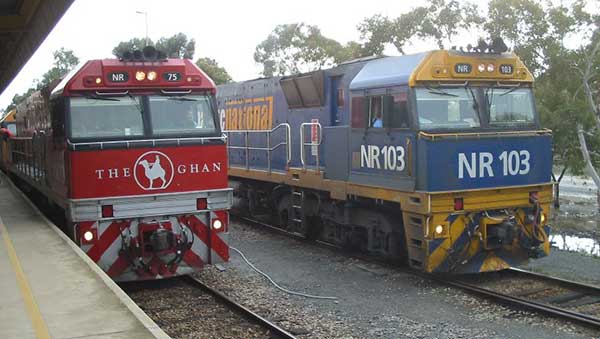Railway Heritage: Moments In Time

10 December 1831: Australia's First Commerical Railway
Railways in Australia date from the 10 December 1831 when the Australian Agricultural Company officially opened Australia's first railway, located at the intersection of Brown and Church Streets, Newcastle, New South Wales. Privately owned and operated to service the A Pit coal mine, it was a cast-iron fishbelly rail on an inclined plane as a gravitational railway.

1836: Australia's First Passenger-carrying Railway
By most definitions, a Convict Tramway hauled by convicts from the Port Arthur convict settlement was the first passenger-carrying railway/tramway in Australia. An unconfirmed report says that the line, between Oakland and Taranna, continued to Eaglehawk Neck and, if this was so, the length of the tramway would have been more than doubled. The gauge is unknown. The tramway carried passengers and freight (with a capacity of one half-ton), and ran on wooden rails.

May 1854: Australia's First Public Railway
Completed in May 1854, the Goolwa to Port Elliott Railway was Australia's first public railway and the first government railway in the British colonies. By linking the River Murray to a sea port it captured for South Australia (SA) river trade from as far as Queensland (QLD). It was extended to Victor Harbour in 1864 and Strathalbyn in 1869. Horses provided the motive power until steam trains were introduced in 1884/5.

1854: The Railway Gauge Fiasco
When railways were beginning in Australia, the three major Australian colonies at the time failed to follow advice from the British Government to adopt a uniform gauge in case the lines of the various states should ever meet. In time they did meet, with dire consequences for passengers and goods handlers alike.

1855: Sydney's Railways Commence
The first public railway to be constructed in Sydney was a private venture linking Sydney and Parramatta. The builders of the single track line went bankrupt 23 days before the inaugural train journey was scheduled to be made. The Government stepped in, enabling the project to be completed on time.

1856: South Australia's Railways commerce
South Australia is one of the youngest colonies in the nation, and the only one which resulted from extensive planning prior to settlement. Governor Hindmarsh arrived in 1836 at a time when technological advances in agriculture and transport were to play a large role in the development of South Australia.

1878: Building the Great Northern Railway
The idea of a railway from Adelaide into the far north was suggested in the 1860s when railway building in Australia was at its peak. Up until that time, Australia's outback telegraph and pastoral stations relied on camel trains to bring their supplies, no matter how isolated or far away they were. These camel trains worked the Queensland road, which later became known as the Birdsville Track, as well as the Oodnadatta and Strzelecki Tracks. but it was only in 2003 that the full dream was realised, and even then, the new Ghan as it was now called, followed a different path to the original line and on standard gauge track.

19 January 1887: The Overland rail service launched
The Intercolonial Express, a passenger train service between the state capitals of Melbourne and Adelaide, made its first run in January 1877. After federation the train was referred to as the Adelaide Express, and known by South Australians as the Melbourne Express. It was given its current name (The Overland) in 1926.

1912: Building the Trans Australia Railway
After a decade or working out the logistics of building a railway joining the west and east coasts of Australia, construction commenced at each end of the line and the track finally joined about five years later in 1917. The single track line, mainly across the Nullabor plain, was built mainly by men and animal power, supported by 250 camels, a few steam shovels and the first track-laying machine to be used in Australia. Track laying rates of up to four kilometres a day were achieved.

17 October 1917: Trans Australia Railway link forged between east and west
The two ends of the Trans Australian Railway being constructed met at Ooldea on the Nullorbor Plain.

1935: Australia's Great Train Robbery
Many stories about railways have featured robbery and theft. Western movies regularly had trains robbed and indeed reflected reality to some degree. Britain had its great train robbery yet here in Australia, rarely is the topic ever mentioned, even though Australia has its own Great Train Robbery story - on the old Northern Express - now known as the Ghan - in May 1935.

24 November 1937: Spirit of Progress launched
Spirit of Progress launched. Melbourne to Albury, where passengers were transferred to the Melbourne Limited Express.

11 March 1958: Australia's Last Steam Locomotive enters service
The last new steam locomotive to enter service on an Australian Government railway was Queensland Railways 4-6-2 BB18¼ Class engine 1089. Initial service was hauling express passenger services, but they later saw a wide range of duties. Today it is preserved at the Workshops Rail Museum at Ipswich, and is still used on occasions for special services.

7 February 1969: Violet Town rail accident
A major rasilway accident occurred following the incapacitation of the driver of one of the trains, near the McDiarmids Road crossing, approximately 1 km south of Violet Town, Victoria. The crash resulted in nine deaths and 117 injuries.

26 February 1970: first standard gauge rail link between east and west
The first standard gauge trans Australian train arrived in Perth after leaving Sydney, NSW, on 23 February. It was the first time a passenger train made the journey from the Pacific coast to the Indian coast without a gauge change.

5 September 1981: first XPT train test run
First test run of NSW Government Railways’ XPT Trains. It visited Wollongong, Thirroul, Picton, Mittagong, Bowral, Moss Vale, Goulburn, Junee, Wagga Wagga. The tour train consisted of XP2000, XF2200, XF2201 and MHN2364.


Gerogory station
6 September 1981: Australian rail speed record of 183km/h set
First test run of NSW Government Railways’ XPT Trains (see above) set a new Australian speed record of 183km/h. It was set between Table Top and Gerogery on 6/9/81. Table Top is an outer suburb of the city of Albury, New South Wales, located 16 kilometres north of Albury and 19 kilometres west of Bowna. At the 2011 census, Table Top had a population of 1253. Gerogery serves a rural farming community. It lies close to the Great Yambla Range, with its striking Tabletop and Sugar Loaf ridge at the southern end.







